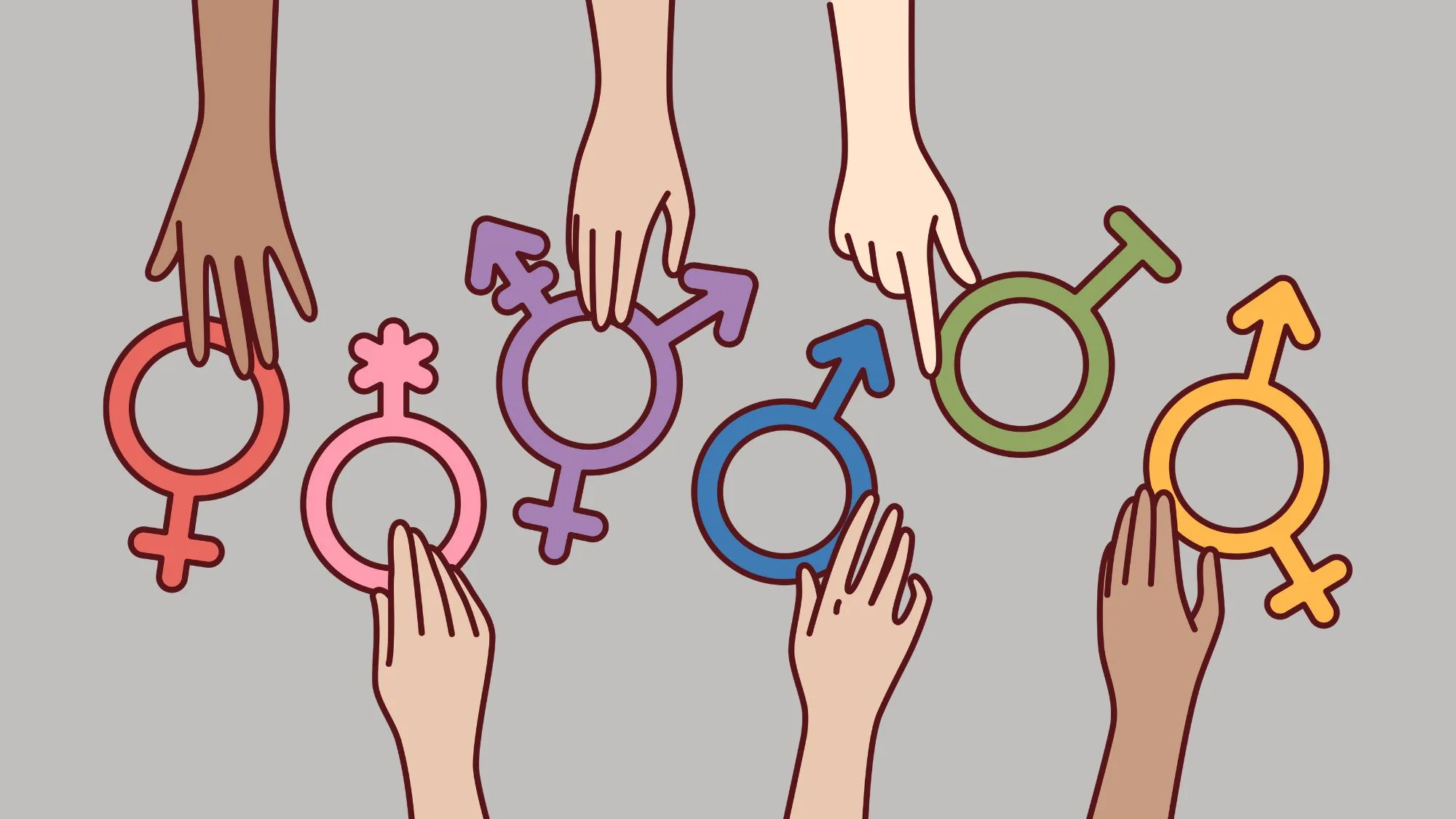Now Reading: Understanding the “Transgender Test”: A Guide to Self-Discovery
-
01
Understanding the “Transgender Test”: A Guide to Self-Discovery
Understanding the “Transgender Test”: A Guide to Self-Discovery

Exploring your gender identity can feel like a complex journey. Many people who question their gender wonder if there’s a simple way to get answers, leading them to search for a “transgender test.” While there isn’t a single, official quiz or medical exam that can definitively tell you if you are transgender, the concept of a “transgender test” really points toward a process of self-exploration, learning, and understanding.
This guide is here to walk you through what that process can look like, offering clarity and support as you navigate your personal path. It’s not about passing or failing; it’s about discovering your most authentic self.
This journey is deeply personal, and the questions that arise are a natural part of figuring things out. We will explore the different ways people “test” their feelings about gender, from internal reflection to social steps, helping you understand the various aspects of this important self-discovery process.
Key Takeaways
- There is no single medical or psychological “transgender test” that provides a simple yes or no answer. The process is one of self-exploration.
- Understanding key terms like gender identity, gender expression, and gender dysphoria is a crucial first step.
- Self-reflection, journaling, and experimenting with gender expression are practical ways to explore your identity.
- Connecting with the transgender community and speaking with professionals like therapists can provide valuable support and guidance.
- The journey of understanding your gender is unique to you, and there is no right or wrong way to go about it.
What Do People Mean by a “Transgender Test”?
When people search for a “transgender test,” they are usually looking for a clear and straightforward way to understand their gender identity. This desire for certainty is completely understandable. The idea of a simple test is appealing because it promises to remove doubt and confusion. However, gender identity is a deeply personal and internal experience that can’t be measured by an external tool. Instead, the “transgender test” is a metaphor for the personal journey of questioning, exploring, and affirming one’s identity.
This process can involve several stages. It might start with a feeling that your assigned gender at birth doesn’t align with who you are. This can lead to research, reading stories from other transgender people, and reflecting on your own life experiences. Many people consider this initial phase of deep thought and learning as their first “transgender test.” It’s a test of self-awareness, where you start to piece together your feelings and see if they resonate with the experiences of others in the transgender community.
Unpacking the Concept
The idea of a “transgender test” can be broken down into different forms of exploration:
- Internal Reflection: Asking yourself deep questions about your identity, happiness, and how you see yourself.
- Social Experimentation: Trying out different names, pronouns, or styles of dress in safe environments to see how they feel.
- Professional Consultation: Speaking with therapists or doctors who specialize in gender identity to gain insight and support.
Each of these steps acts as a kind of personal test, helping you gather more information about your own feelings and experiences.
The First Step: Understanding Key Terminology
Before you can truly explore your identity, it’s helpful to understand the language used to describe gender. Having the right words can make it easier to articulate your feelings to yourself and others. Think of this as the study guide for your personal “transgender test.”
- Gender Identity: This is your internal, deep-seated sense of your own gender. It’s about who you know you are inside. This might be man, woman, a blend of both, or neither (non-binary). Your gender identity is separate from your physical body.
- Gender Expression: This is how you outwardly present your gender. It can include your choice of clothing, hairstyle, mannerisms, and voice. Your gender expression can align with or differ from society’s traditional expectations of gender.
- Assigned Gender at Birth: This is the gender (male or female) that a doctor assigned to you when you were born, usually based on external anatomy. For many people, this aligns with their gender identity (cisgender), but for transgender people, it does not.
- Gender Dysphoria: This is the distress or discomfort a person may feel when their gender identity does not match their assigned gender at birth. This feeling is not a requirement for being transgender, but it is a common experience.
Understanding these terms provides a foundation for your journey. It gives you the vocabulary to explore articles, connect with others, and better understand your own experiences as you navigate what feels like a personal “transgender test.”
The Internal “Transgender Test”: Questions for Self-Reflection
The most important part of this journey happens within you. This internal “transgender test” is a process of asking yourself honest questions and listening carefully to the answers. There are no right or wrong responses; the goal is simply to understand yourself better.
A great way to start is by journaling. Writing down your thoughts and feelings can help you see patterns and gain clarity over time. You don’t have to show your journal to anyone. It’s a private space for you to be completely honest with yourself. This practice can be a powerful tool for self-discovery, allowing you to track your feelings without pressure or judgment. Over weeks or months, you might start to see a consistent theme in your entries that points you toward a clearer understanding of your identity.
Journal Prompts for Exploration
Consider these questions as you reflect. Take your time with them, and remember that your answers might change over time.
- When I imagine myself in the future, what gender am I?
- Does it make me happy or uncomfortable when people refer to me by my assigned gender?
- What feelings come up when I see people who are openly transgender? Is it envy, recognition, or something else?
- If I could press a button and instantly wake up in a body that reflects a different gender, would I press it?
- How do I feel when I think about using a different name or pronouns?
The Social “Transgender Test”: Trying Things Out in the Real World
After some internal reflection, you might feel ready to take small, practical steps to see what feels right. This is the social part of the “transgender test,” where you experiment with your gender expression in different settings. The key is to start small and in environments where you feel safe and supported.
For example, you could start by trying out a new name or pronouns online. Create an account on a social media platform or a gaming forum using the name and pronouns you want to try. See how it feels when other people refer to you in that way. Does it feel natural, affirming, or exciting? This low-stakes experiment can provide valuable feedback. This method is a safe and reversible way to “test” your feelings without making any major changes in your daily life. It helps you see if these changes bring you a sense of relief or joy.
Safe Ways to Experiment
Here are some ideas for social experimentation:
- Online Identity: Use a different name/pronouns in online communities.
- With a Trusted Friend: Ask a close friend to use a different name or pronouns for you in private conversations.
- Clothing and Appearance: Experiment with different styles of clothing, hairstyles, or accessories at home or with trusted friends.
- Support Groups: Attend an LGBTQ+ youth group or online forum where you can introduce yourself however you feel comfortable.
Understanding Gender Dysphoria
For many, but not all, transgender people, a significant part of their experience is gender dysphoria. This is the clinical term for the distress caused by the mismatch between one’s gender identity and assigned gender. Understanding if you experience dysphoria can be a part of your self-discovery “transgender test.”
Dysphoria can manifest in different ways. It’s not just about hating your body; it can be more subtle.
|
Type of Dysphoria |
Description |
Example |
|---|---|---|
|
Social Dysphoria |
Distress from being misgendered or seen as your assigned gender in social situations. |
Feeling anxious when someone uses the wrong pronouns for you or calls you “sir” or “ma’am” incorrectly. |
|
Body Dysphoria |
Discomfort or distress with physical characteristics related to your assigned gender at birth. |
Feeling a strong need to bind your chest or distress over having facial hair or a certain body shape. |
|
Mental Dysphoria |
The internal feeling of disconnect and unhappiness with the incongruence of your identity. |
A persistent, nagging feeling that something is “wrong” or “off” without being able to pinpoint it. |
It’s important to remember that not every transgender person experiences dysphoria, and the lack of it does not invalidate your identity. Some people experience gender euphoria—a feeling of joy and rightness when their gender is affirmed. This can be an equally powerful indicator on your journey.
Is There a Medical “Transgender Test”?
A common misconception is that there is a medical or psychological exam that acts as an official “transgender test.” This is not the case. No doctor can give you a blood test or brain scan to confirm you are transgender. The process of medical transition is guided by self-reporting and a diagnosis of gender dysphoria, but the diagnosis itself relies on what you tell your doctor or therapist.
When you seek professional support, a therapist or doctor will talk with you about your experiences, feelings, and goals. They are there to help you understand your own identity, not to give you a pass/fail grade. For those who choose to medically transition, this professional support is often the first step toward accessing gender-affirming care like hormone therapy or surgeries. This process is about confirming what you already know about yourself and getting the support you need to live authentically.
What to Expect from a Professional
- In-depth conversations: A therapist specializing in gender will ask you about your childhood, your feelings about your body, and your social experiences.
- No pressure: A good therapist will never push you toward a specific identity or outcome. Their role is to provide a safe space for exploration.
- Guidance, not answers: They will provide you with resources and tools to help you on your journey, but the ultimate authority on your identity is you.
Finding Community and Support
You don’t have to go through this journey alone. Connecting with others who have similar experiences can be one of the most affirming parts of your “transgender test.” Finding a community validates your feelings and shows you that you are not the only one asking these questions.
Online forums, social media groups, and local LGBTQ+ centers are excellent places to find support. Hearing stories from other transgender people can provide a sense of recognition and belonging. As you explore different aspects of your identity, it’s helpful to see how others have navigated their paths. You might find valuable information and resources, just as you might find on informative sites like Forbes Planet, which covers a wide range of topics. These communities can become a chosen family, offering advice, encouragement, and a safe space to be yourself.
Where to Find Support
- The Trevor Project: Offers resources and a crisis hotline for LGBTQ+ youth.
- Local LGBTQ+ Centers: Many cities have community centers with support groups and events.
- Online Communities: Reddit (e.g., r/asktransgender), Facebook groups, and Discord servers can provide anonymous, 24/7 support.
The Journey Is Unique to You
Ultimately, the search for a “transgender test” is a search for self-acceptance. There is no timeline, no checklist, and no single path to follow. Your journey is yours alone. Some people know their gender identity from a very young age, while others discover it later in life. Both paths are valid.
Be patient and kind to yourself throughout this process. Allow yourself the space to question, to experiment, and to change your mind. The goal isn’t to arrive at a label as quickly as possible, but to find the identity and expression that brings you the most peace and happiness. This exploration is a sign of strength and self-awareness. Trust your feelings and know that wherever your journey leads, the most important thing is to be true to yourself.
Conclusion
While a simple, one-size-fits-all “transgender test” doesn’t exist, the journey of self-discovery it represents is a valid and important one. This process involves a combination of deep self-reflection, understanding key concepts like gender dysphoria and euphoria, and experimenting with your gender expression in safe ways. It’s a path of asking questions, listening to your inner voice, and finding what feels authentic to you.
Remember to be patient with yourself and seek support when you need it. Connecting with the transgender community or speaking with a gender-affirming therapist can provide invaluable guidance and reassurance. Your identity is your own to define, and this journey of exploration is a courageous step toward living a life that is true, happy, and authentically yours.
Frequently Asked Questions (FAQ)
Q1: Can an online quiz tell me if I am transgender?
No, an online quiz cannot definitively tell you if you are transgender. While some quizzes can be a fun tool for self-reflection, your gender identity is a complex and personal experience that can’t be determined by a short questionnaire. They are best used as a starting point for deeper thought, not as a final answer.
Q2: Do I have to have gender dysphoria to be transgender?
No, you do not have to experience gender dysphoria to be transgender. While many transgender people do feel dysphoria, some experience gender euphoria—a feeling of joy when their gender is affirmed—as the primary indicator of their identity. The absence of distress does not invalidate your identity.
Q3: How long does the “transgender test” or self-discovery process take?
There is no set timeline for discovering your gender identity. For some, it is a realization that happens over a few months, while for others, it can be a journey of many years. It is a deeply personal process, and it’s important to go at your own pace without feeling rushed.
Q4: What if I’m not sure after exploring my feelings?
It is completely okay to be unsure. Gender can be fluid, and it’s normal to have questions or for your feelings to change over time. Being “gender-questioning” is a valid identity in itself. The most important thing is to give yourself the grace and time to figure things out without pressure.
Q5: Who should I talk to about my feelings?
If you feel safe and comfortable, you can start by talking to a trusted friend or family member. Additionally, seeking out a therapist or counselor who specializes in gender identity can be extremely helpful. They can provide a non-judgmental space for you to explore your feelings and offer professional guidance.

















